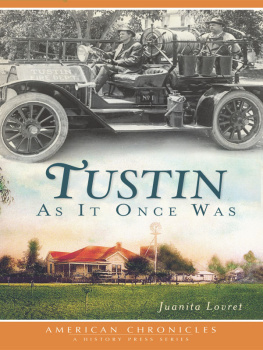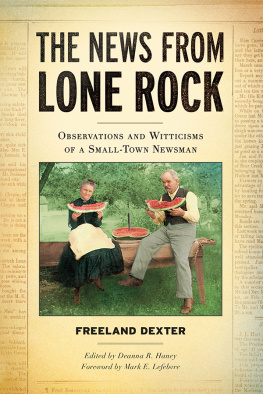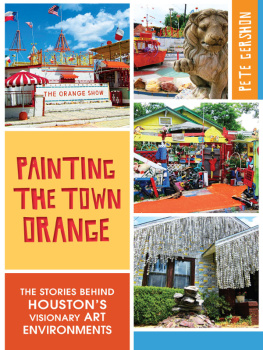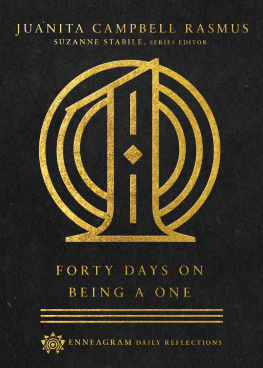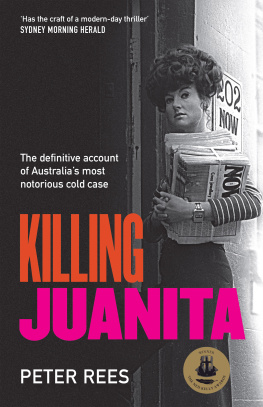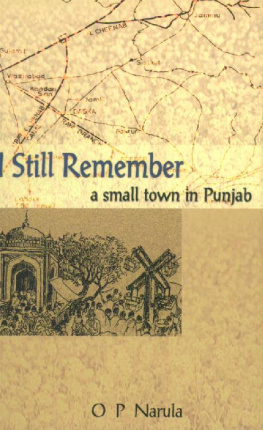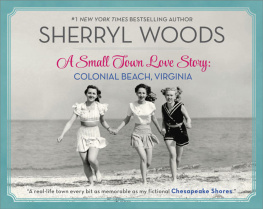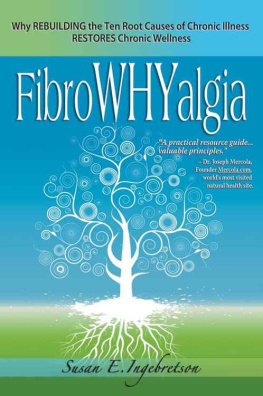

Published by The History Press
Charleston, SC 29403
www.historypress.net
Copyright 2011 by Juanita Lovret
All rights reserved
Front cover image: The authors grandparents, E.S. and Maud Jones, built this house in the late 1800s in the middle of their newly planted orange orchard. Courtesy of the author.
First published 2011
e-book edition 2013
Manufactured in the United States
ISBN 978.1.62584.138.4
Library of Congress Cataloging-in-Publication Data
Lovret, Juanita.
Tustin as it once was / Juanita Lovret.
p. cm.
A collection of articles from the Tustin news column Remember when.
print edition ISBN 978-1-60949-461-2
1. Tustin (Calif.)--History. 2. Tustin (Calif.)--Social life and customs. I. Tustin news. II. Title.
F869.T88L68 2011
979.496--dc23
2011038705
Notice: The information in this book is true and complete to the best of our knowledge. It is offered without guarantee on the part of the author or The History Press. The author and The History Press disclaim all liability in connection with the use of this book.
All rights reserved. No part of this book may be reproduced or transmitted in any form whatsoever without prior written permission from the publisher except in the case of brief quotations embodied in critical articles and reviews.
Contents
Acknowledgments
Jill Leach, editor of the Tustin News at the time, spurred my interest in history in 1997 when she convinced me to write a column entitled Remember When, based on my memories of Tustin. Without her persuasion, plus the encouragement and aid of many others, the five-hundred-plus columns that inspired this book would never have materialized.
First Marsha Lundin and now Barbara Hannigan and Bill Finken in the Tustin Area Museum office have offered ideas and interrupted their work to help me with research as well as to find photos. Compliments and praise from the readers of the Tustin News have maintained my interest. These people, plus many otherssuch as my husband, Clint, who proofreads my work, and Guy Ball, a computer genius who has shared his knowledge and skills, as well as encouragement when I have become frustratedhave earned my deepest gratitude and thanks.
I couldnt have done it without you!
Introduction
MEMORIES OF OLD TUSTIN
As we look at the intersection of Main and D (El Camino Real) today, it is difficult to realize that these four corners were the heart of Tustins commercial district for almost one hundred years until the mid 1950s, when housing tracts began to replace orange orchards and shopping centers were built to serve the hundreds of new residents.
When Tustin was being settled, Fourth Street, as it was labeled on Columbus Tustins plat map, soon became known as Main Street because it was the principal street in the tiny village, with L. Utt Pioneer Store, Dr. Levi Fullers drugstore, the post office, the Tustin Building, a blacksmith and later the Bank of Tustin all located here. The name stuck, and Fourth Street was soon forgotten.
When I was a kid, a trip to Tustin from our orange ranch outside town began with a stop at the First National Bank of Tustin, successor to the Bank of Tustin, on the corner of Main and D (El Camino Real). After her transaction was completed, my mother would linger to chat with Frances Logan, the longtime teller who knew everything that happened in Tustin. While they were gossiping, I would admire the ornate Victorian woodwork and fancy iron work on the teller windows. Teller Bill Leinberger would probably be talking with someone. Mr. VanceCharlie to those who knew him wellthe cashier, would probably be occupied at his desk, perhaps making a loan to a farmer who was waiting for the packinghouse to send him a check for his orange crop.
As we left the bank, Id wonder how many feet had passed over the worn concrete stoop since it had been installed in 1888. Practically everyone in town banked here. Grammar school children learned about thrift by hoarding their pennies and walking to the bank as a class each month to deposit them.
Mother and I usually had many other errands. First, wed visit Mrs. Gowdy at the Tustin Library and check out a few books. Then wed cross to the drugstore to pick up toothpaste or other items. If it was a hot day, wed climb up on the stools at the counter and have a Coke or soda.
Buying stamps at the post office down the street or picking up clothes at the cleaners or leaving my dads watch at the jewelry shop for repair might be next on our to-do list. Usually wed stop at Coxs Market or Carters grocery store. Both had meat counters with butchers who gave Mother the best cuts of meat, but I was more interested in the big box with the round lids that housed the ice cream. Ice cream was a special treat since we only had an ice box at home.
Big John Stanton might be pulling up alongside the drugstore in his police vehicle as we returned to our car. He always nodded politely to Mother and me. I was a little afraid of him since Id been frightened by the siren on his police car when he once took off after a speeder while we waited on the corner to cross D Street.
Mother would have liked to browse at Crawfords Frock Shop, which was located nearby in the little building that had been the office of Dr. Sheldon, Tustins first doctor, and check out Tustin Hardwares merchandise, as well as the new plants at Piepers Feed Store, but there was no time, as it was almost noon. Dad would be coming in from tractoring and expect his dinner.
The Tustin Billiard Hall was the only place we never visited in downtown Tustin, now called Old Town. Mother didnt even like to walk past it and always cautioned me to look the other way.
Many of the stories in this book were sparked by my childhood memories of Tustin as a small vibrant commercial center, plus stories told by my mother, my aunts and uncle of their childhoods in the very early days of the village founded by Columbus Tustin. Our family has been part of the area since 1885, when my grandparents bought barren land and turned it into a ranch outside of the tiny, fledgling settlement. Mother, her sisters and brother grew up with the town. Ive spent my life in the wonderful community that resulted. Now my grandchildren are the ones listening to tales of the small town Tustin once was, as they enjoy the metropolitan area it has become.
Chapter 1
Tustins Early Years
JOSE ANTONIO YORBA SELLS RANCHO TO DEVELOPERS
Looking down on what could be a Monopoly board of houses and buildings as you fly over the Tustin area, en route to John Wayne airport, it is easy to forget that the area was covered with wild mustard, oak and sycamore trees when the first inhabitants, the California Indians, lived there.
Hunters and gatherers, they lived off the land and migrated from location to location to find game and food. The only buildings were small thatched huts called wickiups.
Spanish explorers visited the California coast beginning in 1500, but not until 1769 did the first white menSpanish missionaries Father Juan Crespi and Father Francisco Gomez, traveling with Don Gaspar de Portola, governor of Lower California, and a company of four officers and sixty-three menentered the area that is now Orange County. They camped briefly, but no white men settled here until 1776, when Mission San Juan Capistrano was founded.
Spanish soldiers arriving with the missionaries established homes, spreading out as far as what is now Olive. They eventually petitioned the Spanish government for the properties, and the Rancho Period began. Rancho Santiago de Santa Ana, which would eventually become Tustin, Santa Ana, Orange, Olive, El Modena, Costa Mesa and part of Newport, was granted to Jose Antonio Yorba by the king of Spain in 1809. After Mexico won its freedom from Spain in 1821 and control of Alta California, land grants became more numerous.
Next page
